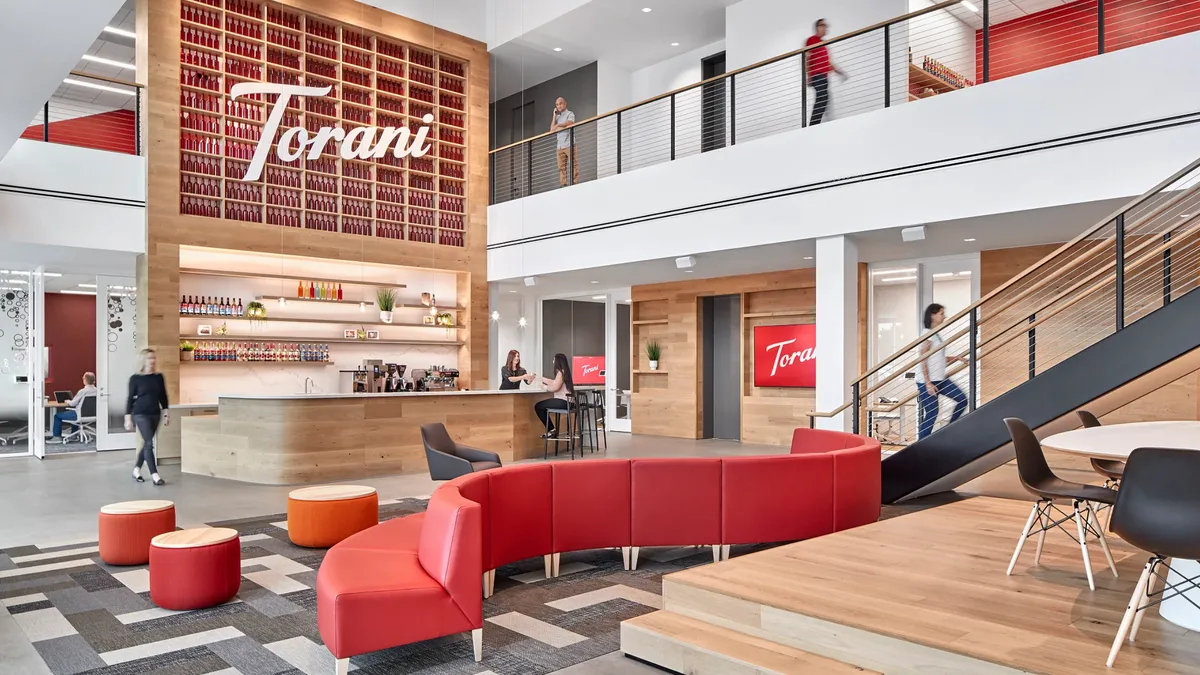Editor’s Note: In this Employee Experience column, HR Dive reporter Caroline Colvin discusses the “Bare Minimum Mondays” TikTok trend discourse — and whether HR should crack down on the concept.
By now, you’ve probably heard the term “bare minimum Mondays.” Similar to “quiet quitting,” the trend, coined by TikToker Marisa Jo Mayes, encourages workers to pull back from their heavy workloads to avoid burnout — however that looks for them. Understandably, conversations about not doing work on the clock can make human resources pros bristle.
But are “bare minimum Mondays” at odds with good workplace culture?
In my attempts at stunt journalism, I wanted to have a bare minimum Monday to write from. But I kept running into a conundrum: as a full-time journalist, you don’t get bare minimum Mondays.
In fact, there never seems to be enough hours in my Mondays, as I tread the choppy waters of an inbox teeming with PR pitches. I get the ball rolling on existing stories, while conjuring up new ones to pitch. I’m attending the companywide meeting, and sometimes, my DEI subcommittee meeting.
@itsmarisajo #BareMinimumMonday ♬ Summer Background Jazz - Jazz Background Vibes
My roommates and I have chore cycles that end on Mondays, so post-work, there’s a mad dash to tidy up the kitchen or living room, or take out the compostable smoothie cups and greasy pizza boxes that have accumulated over the weekend. And there’s always, always laundry.
It’s a frustration that was echoed in my interview Paaras Parker, CHRO of Paycor. “Where I struggle a little bit with bare minimum Mondays is, ‘Where's that work going?’ Does that mean your Tuesday's crazier? And so is your Wednesday, and so is your Thursday, and so is your Friday?” she asked. “We're not actually hitting the root cause.”
“The concept of ‘I can have my cake and eat it too’ doesn't really translate into anything. The effort that you put in is often going to be the type of effort and results that you get out. When we see things like bare minimum Mondays or another phrase that candidly I’m not a big fan of, ‘quiet quitting,’ I don’t actually think that’s what human beings want or what they’re striving for,” Parker said. “It’s a cry for help.”
HR is there to help people advocate for themselves, Parker said. When talent exhibits “bare minimum” behaviors, HR pros can put their energy into supporting employers and individuals in reprioritizing where they spend their time and efforts.
Parker, who first heard about the trend on TikTok, in part attributes the fascination with bare minimum Mondays to a digital-first world. When talent is in crisis, Parker said, “You offer help. You don't offer a hashtag.”
Abraham Gonzales-Pollick, VP of client development at HCM company Vensure Employer Services, explained to me that he doesn’t see the bare minimum Monday trend as inherently negative or positive, harmful or helpful. His gut reaction, when he first investigated the term, was curiosity.
“Is this about just disengaging and not wanting to do your job? That’s my first gut reaction, like, is it really just something like quiet quitting? ‘I’m only going to do what I need to do to get by and get out of here. I'm not giving any more because I’m not getting any more,’” he recalled. Then he started reading other workers’ interpretations of the phrase.
He realized, “This is about self care. This is about prioritizing, so that you don’t have burnout. ‘I’m going to do what I need to do, so that I can set myself up for the week.’ So that I can give.” From his perspective, bare minimum Mondays stem from engagement issues.
What HR can do is help employees take better care of their health, “whether it’s mental or physical, so that they can bring 100% to the job,” he said.
Solutions, for Gonzales-Pollick, are dependent on the type of job. For example, office workers and deskless employees have vastly different demands of their roles. Essential services most often are done “on-site”; these workers don’t have the luxury of working from home. What employers can do for these workers is hold “stay interviews,” he said.
“Hear from the employees on what they need at that moment — that can really help organizations give the employees what they need, that’s relevant for their organization. Maybe their organization does need more flexibility. Maybe their organization needs better pay. Maybe the organization needs more fun activities. Maybe the employees need a little bonus. Who knows, right?” Gonzales-Pollick said. “Every organization is different. Every industry is different.”
There’s also a through-line of multigenerational workplaces. He highlighted that on one hand, Gen Xers and baby boomers are often shouldering mortgages, paying college tuition and preparing for retirement. Meanwhile, Gen Zers grapple with inflation in their formative adulting years; “The cost of living is higher. It’s not easy to buy a house these days,” he said. The struggles workers face at each of these places in their life are valid.
Some fixes, especially for salaried employees, are a matter of restructuring total rewards. For example, Gonzales-Pollick suggested HR managers reassess PTO and whether the culture of work encourages time off.
Ultimately, Parker’s advice to her peers is to make sure managers have defined expectations for workload, that they’re communicated clearly and that “they have the opportunity regularly to understand how they’re doing against those expectations.”
Gonzales-Pollick’s current opinion of the trend: “I think there’s something to it.” He added that “employers have a huge opportunity to create the conditions for employees to ease into their week, to balance their week out — so that we avoid these anxieties that some employees are having on Sunday night before they come in to work on Monday.”
It’s key that employers, you know, tackle that work-week-related stress that Marisa Jo Hayes has been talking about.























